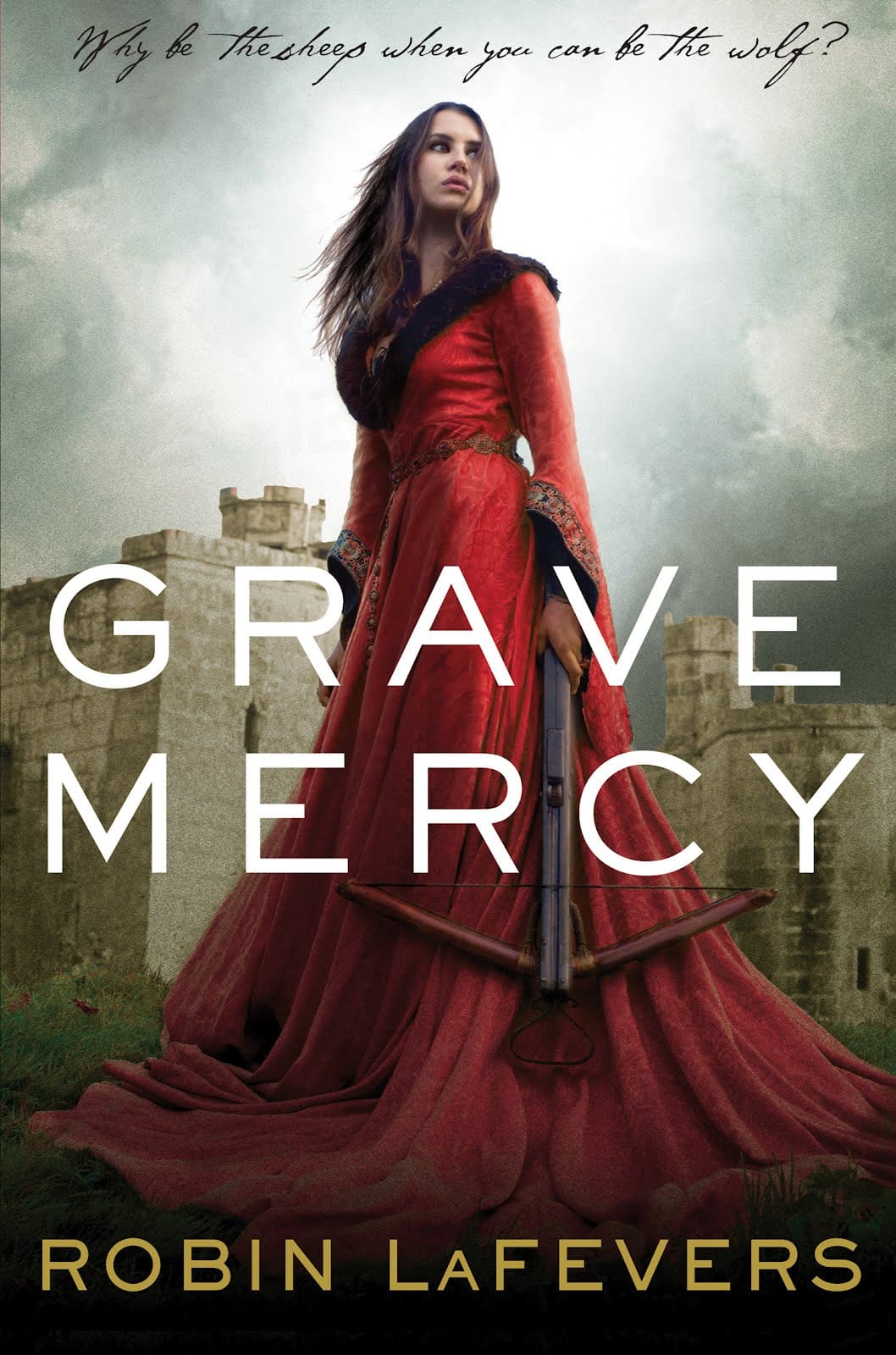Nun assassins, y’all.
I’m not sure why the marketing didn’t just splash that all over the front of Grave Mercy, as once I heard that description, I was all over this book.
For those who need more, here is the description from the book itself:
Escaping from the brutality of an arranged marriage, seventeen-year-old Ismae finds sanctuary at the convent of St. Mortain, where the sisters still serve the gods of old. Here she learns that the god of Death himself has blessed her with dangerous gifts—and a violent destiny. If she chooses to stay at the convent, she will be trained as an assassin and serve as a handmaiden to Death. To claim her new life, she must be willing to take the lives of others.
Ismae’s most important assignment takes her straight into the high court of Brittany, where she must pose as mistress to the darkly mysterious Gavriel Duval, who has fallen under a cloud of suspicion. Once there, she finds herself woefully under prepared—not only for the deadly games of love and intrigue, but for the impossible choices she must make. For how can she deliver Death’s vengeance upon a target who, against her will, has stolen her heart?
Grave Mercy by Robin LaFevers, the first in the His Fair Assassin trilogy, is possibly one of the finest kick-butt-girl-assassin books out there. It’s high on action, drama, strong-but-not-stereotypical heroines, and lack-of-love-triangles—and the one romance that it does develop emerges slowly and believably. Add it to your reading list now, but if you need more reasons why you should, read on:
Despite its length (a hefty 549 pages), Grave Mercy is an astonishingly quick read. The chapters are short and nearly always end with a cliffhanger or similarly intriguing bit of information. The plot itself, too, carefully balances the machinations of court drama with the violent clashes that readers expect of assassin books, so there’s literally never a slow moment.
For some readers, though, the opening will be slightly frustrating. Ismae herself doesn’t become an interesting character until she goes to court. Until then, she strikes me as someone who would be a real downer at parties. Pretty much every emotion she has is serious, begrudging, and usually made in relation to her abilities and position as an assassin for Saint Mortain. She also begins with a nasty man-hating streak that I found exaggerated at best, grating at worst—but I suppose if my only interactions with men consisted of an abusive father and husband, I probably wouldn’t like men, either. Still, it does read like a tiny tumblr rant when she ponders using her finely honed Saint-given assassination skills to kill a man who groped her in a tavern.
Once she reaches court, however, she blossoms as a character. She finds that she’s not as equipped for the job as she thought she was, but even so, learns to handle her inadequacies with competence, and never lets her insecurities get the better of her. When faced with a problem, she never whines about it; she finds a way to overcome it, which is not only admirable but far less exhausting to read. Truly, she faces so many challenges in each chapter that she can’t risk stopping. I’m pretty sure that if she’d stopped to whine, she’d have missed pivotal plot information. The novel moves that quickly, and the stakes are that high.
Though I read the book for its assassin action, I was pleasantly surprised by the tension of the court scenes, too. There’s a whole ton of political mess going on in this setting—France is threatening invasion, the twelve-year-old Duchess of Brittany needs armies to defend the duchy, and the main way she’ll be able to secure those armies is accepting one of any number of marriage offers, the most militarily promising of which is to a total scumbag. She knows there are traitors about in the court, loyal to either the French or to the scumbag, but she doesn’t know who they are, and the novel is written so that nearly everyone’s allegiance is called into question at one point or another. Ismae is determined to weed out the traitors, but this is where her failings challenge her. She can spy, of course, but over half of spying at court is done through sneaky, clever interpersonal relations, and Ismae’s social skills sometimes risk jeopardizing her goals. She also doesn’t know if she can trust the people she’s chosen to ally with, which adds a further layer of tension—especially when she falls in love with one of them.
This brings me to another of the novel’s strong points. The romance that buds between Ismae and Duval is a refreshing one. Never does it become a focus of the novel—both characters acknowledge that they have more important things to do than be all lovey-dovey—but when it hits, it hits hard, to great suspenseful effect. The last quarter of the novel is intense anyway, but the tension introduced by the romance makes it better. That the romance is introduced gradually, and as a byproduct of the two working together to save the duchy makes it even better, as does the fact that it is largely a positive relationship, despite its politically-motivated bumps.
That romance actually reminded of the slow romances between Seraphina and Kiggs in Seraphina and Katsa and Po in Graceling. Similarly, Ismae’s relationship with the young duchess reminded me of Katsa’s with Bitterblue, and the mental sharpness of the duchess reminded me of Seraphina’s Princess Gliselda. And when a book can draw comparisons with not one, but two of my favorites, it’s an excellent thing.
***
Note: Holo Writing is a participant in the Amazon Services LLC Associates Program and, as such, may earn a small commission from any product purchased through an affiliate link on this blog.


Leave a Reply